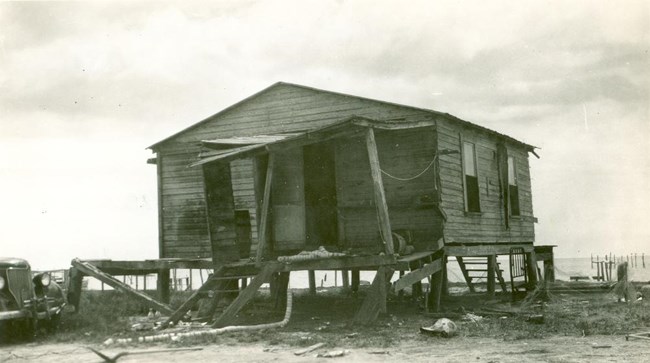
NPS photo (EVER 12527)
Tropical Weather
The most destructive hurricanes demolished the flimsiest shacks and houses at Flamingo while damaging the sturdier structures. After the storms, survivors salvaged lumber from the wreckage or received donations from charities in order to rebuild. Many locals decided not to rebuild and instead left Flamingo for good. Salt water surges from Florida Bay did more than damage homes. Some residents raised sugar cane, but the Great Cuba Hurricane of October 1910 hurricane destroyed the harvest and sea water made the fields too salty to replant cane successfully.
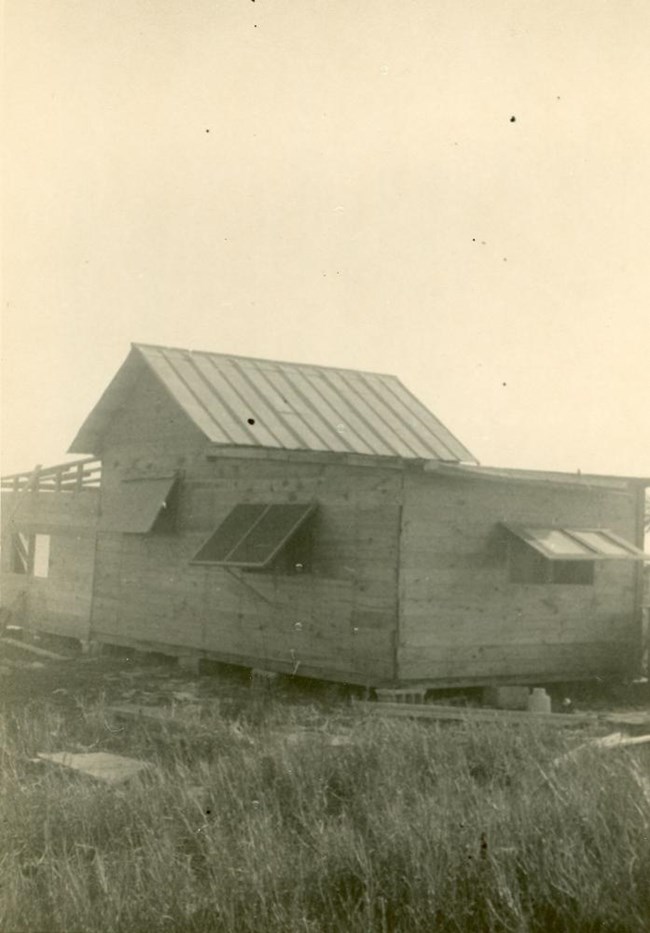
NPS photo (EVER 15105)
The 1935 Labor Day hurricane destroyed every house in Flamingo along with a substantial section of a black mangrove forest.
A category 4 hurricane in 1948 packed a punch with sustained winds of 120-130 mph. It struck in September and damaged this house, which fared relatively well and was not a complete loss. Although the porch partially collapsed, the majority of the house remained in good shape.
When it made landfall in the Florida Keys on September 10, 1960, Hurricane Donna carried winds of 145 mph and was the most severe hurricane in the keys since the Labor Day 1935 storm. The recently completed Flamingo Visitor Center complex in Everglades National Park sustained severe damage from winds and storm surge.
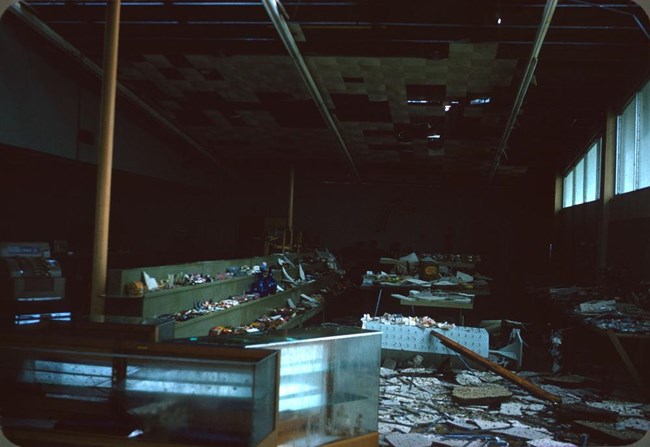
NPS photo (EVER 14463)
Hurricanes remain a major challenge to those who work at, live in, and visit Flamingo. In 2005, hurricanes Katrina and Wilma so severely damaged Flamingo’s lodging facilities that the National Park Service later demolished and removed them. Hurricane Irma struck the west coast of Florida in September 2017, including Flamingo, where it flooded the campground and damaged the roof of the visitor center. The National Park Service is rebuilding at Flamingo, however, where a renovated Guy Bradley Visitor Center and new restaurant and hotel will open in 2022.
Residents who chose to endure mosquitoes and harsh tropical weather to live on Florida Bay had a limited range of choices to make a living. How could Flamingo residents take advantage of nature's bounty to eke out a living and perhaps experience paradise instead of purgatory?
CHALLENGES OF LIVING IN FLAMINGO
-
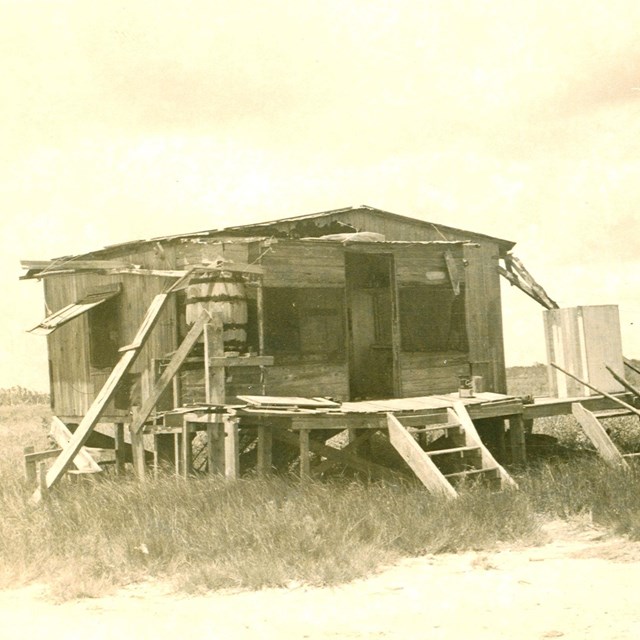 Isolation
IsolationSimple structures like this dotted the landscape in the Flamingo area in the first half of the 1900s.
-
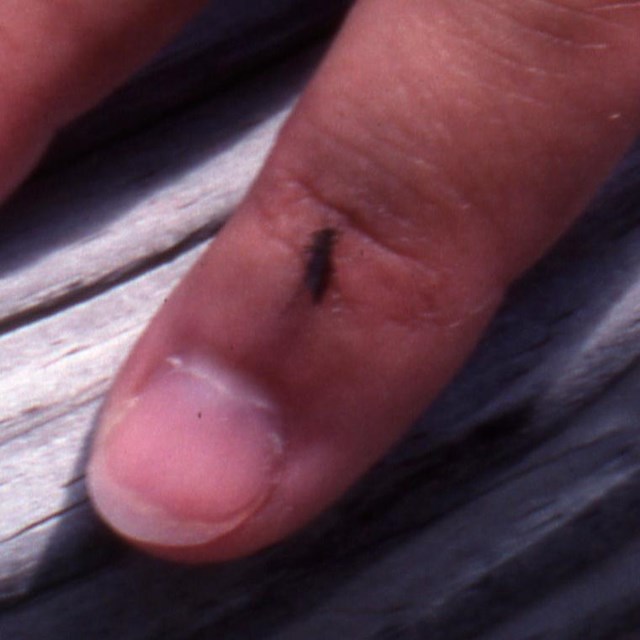 Mosquitoes
MosquitoesMosquitoes have plagued humans for as long as humans have tried to live along Florida Bay.
-
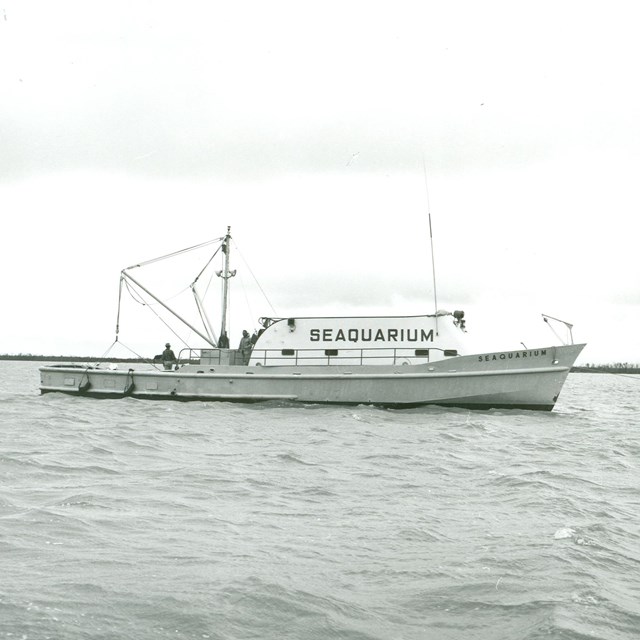 Making a Living
Making a LivingThe rich natural resources in Florida Bay lure people trying to make a living.
-
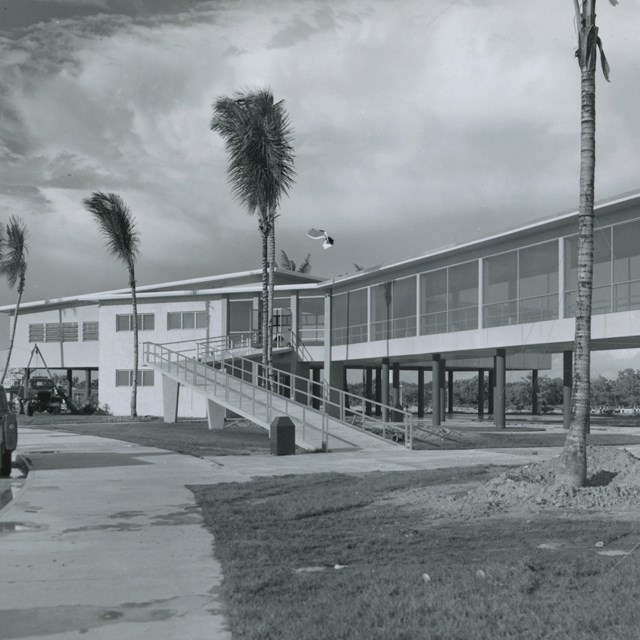 The NPS in Flamingo
The NPS in FlamingoThe National Park Service transforms life in Flamingo after Everglades National Park is dedicated in 1947.
Last updated: July 16, 2024
